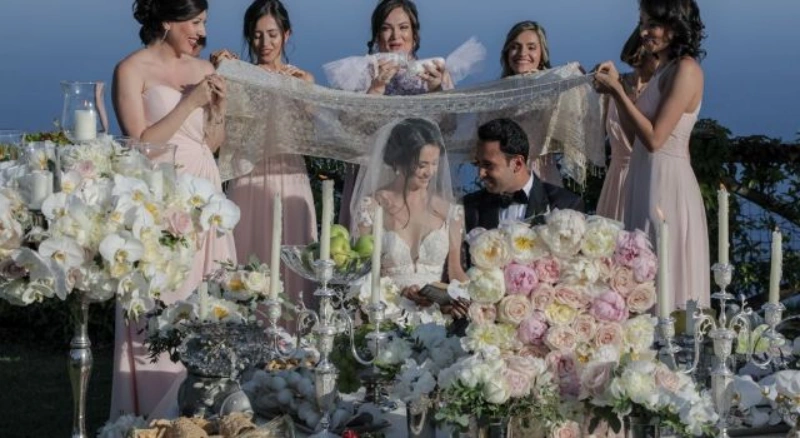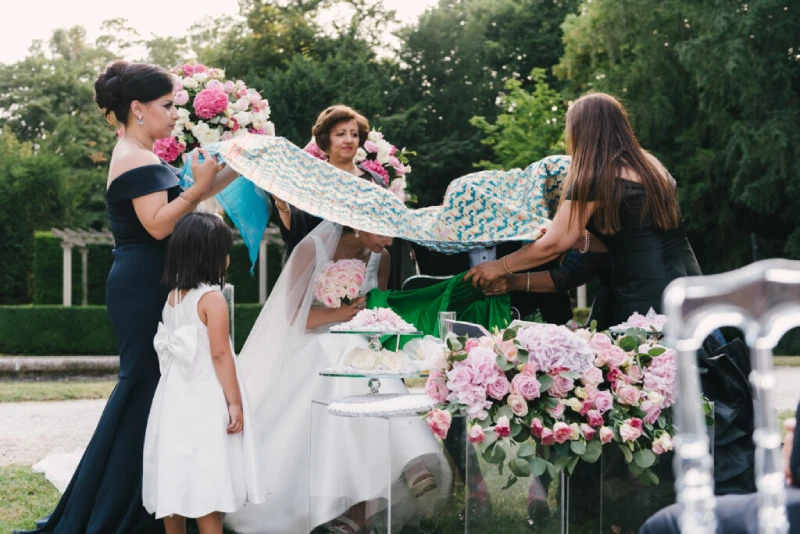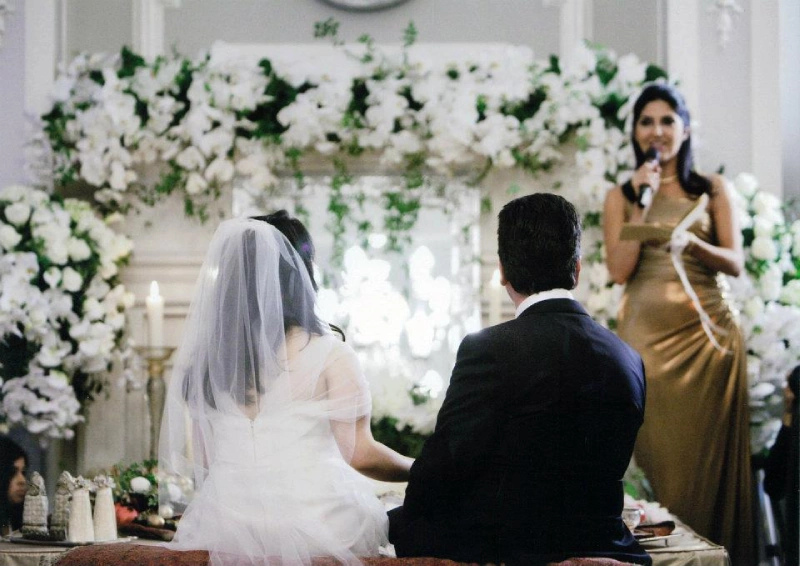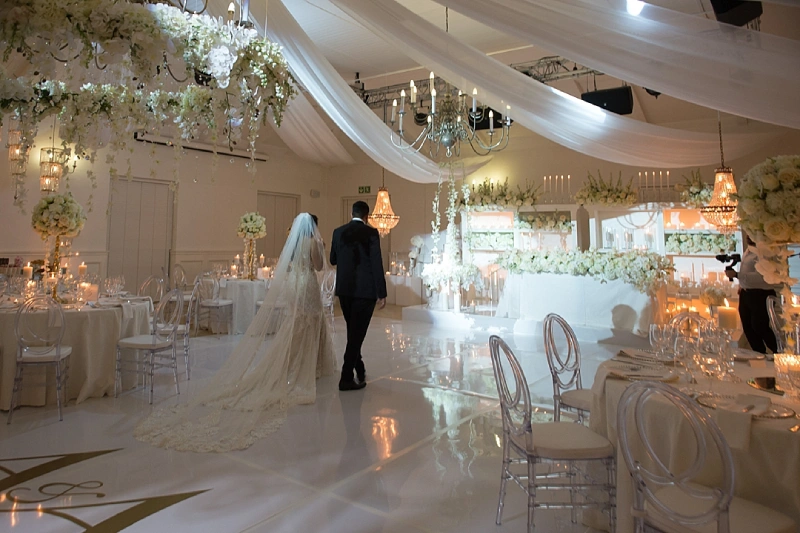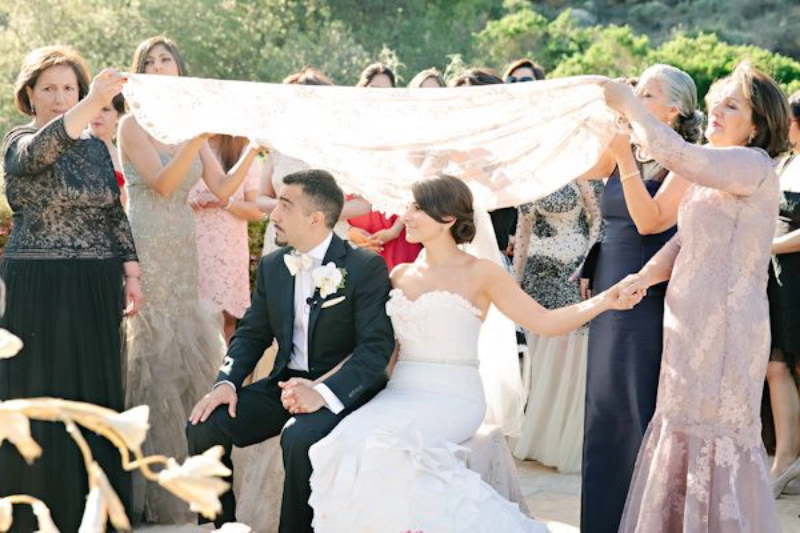Persian weddings in Australia are a beautifully vibrant fusion of tradition and modernity, celebrated against the stunning backdrop of this diverse country. As couples embark on their journey of love, choosing the best season and location is essential to create an unforgettable experience that honors their heritage while embracing the local charm. From the blooming flowers of spring that mirror the joy of new beginnings to the golden hues of autumn that add warmth to every gathering, each season offers unique charms. Imagine exchanging vows beneath the iconic Sydney Opera House or dancing the night away in the picturesque vineyards of the Yarra Valley. In this article, we’ll explore the most enchanting seasons and locations across Australia, helping you create a Persian wedding that reflects both your love story and cultural roots. Join us as we delve into the magic of celebrating love in a setting that captures the heart and spirit of Persia amidst the stunning Australian landscape.
Significance of Seasons in Persian Culture
Seasons hold profound significance in Persian culture, deeply intertwined with the rhythms of life and the natural world. Each season is celebrated for its unique characteristics, symbolizing different aspects of human existence and the universe. Traditionally, Persian culture has revered spring, known as “Bahar,” as a time of renewal, rebirth, and growth. This period is marked by the celebration of Nowruz, the Persian New Year, which coincides with the vernal equinox. Nowruz is a time of joy, family gatherings, and the commencement of new ventures, making it an auspicious season for weddings.
Summer, referred to as “Tabestan,” represents warmth, abundance, and the peak of life’s vibrancy. It is a season of long days and abundant sunlight, encouraging outdoor festivities and celebrations. In Persian culture, summer is often associated with the harvest and the fruition of hard work, making it another favorable period for weddings. The warmth of summer aligns perfectly with the lively and colorful nature of Persian weddings, where music, dance, and elaborate feasts are integral elements.
Autumn, or “Paeez,” brings a different sort of beauty, with its golden hues and cooler temperatures. This season symbolizes maturity, wisdom, and the bounty of the earth. In Persian literature and poetry, autumn is often depicted as a time of reflection and gratitude, appreciating the beauty and transience of life. Winter, known as “Zemestan,” is a time of introspection and gathering around the warmth of family and friends. It signifies the end of one cycle and the preparation for another, often seen as a time of quiet celebration. Each of these seasons, with their distinct characteristics, offers a unique backdrop for a Persian wedding, enriching the celebration with deeper cultural significance.
Best Seasons for Persian Weddings in Australia
Australia, with its diverse climate and picturesque landscapes, offers a remarkable setting for Persian weddings. The best seasons for these celebrations typically align with the traditional Persian calendar but are adapted to the Southern Hemisphere’s seasonal variations. Spring in Australia, from September to November, is particularly enchanting. The blooming flowers and mild weather create a perfect atmosphere for outdoor weddings. The vibrant colors and fresh air resonate with the themes of renewal and new beginnings, making spring an ideal season for Persian weddings.
Summer in Australia, spanning December to February, offers warm temperatures and long days, perfect for extended celebrations. The outdoor venues come alive with the sun’s golden rays, and the evenings are perfect for under-the-stars festivities. This season is ideal for beach weddings or garden ceremonies, where the natural beauty of Australia can be fully appreciated. The lively atmosphere of summer complements the joyous and elaborate nature of Persian weddings, ensuring a memorable experience for all guests.
Autumn, from March to May, brings a different charm with its cooler temperatures and stunning foliage. The rich, golden hues of autumn provide a beautiful backdrop for wedding photos and create a cozy, intimate environment for the celebration. This season is perfect for vineyard weddings or countryside venues, where the natural beauty of the changing leaves adds a touch of elegance and warmth. Winter, from June to August, might be less popular for weddings due to the cooler weather, but it can offer a unique and intimate setting. Indoor venues with fireplaces or historical buildings can provide a romantic and cozy atmosphere, ideal for a smaller, more intimate gathering.
Popular Locations for Persian Weddings in Australia
Australia boasts a variety of breathtaking locations that can serve as the perfect backdrop for a Persian wedding. Sydney, with its iconic landmarks and stunning harbor views, is a top choice for many couples. Imagine exchanging vows with the Sydney Opera House or the Sydney Harbour Bridge as your backdrop. The city’s diverse range of venues includes luxurious hotels, beautiful gardens, and picturesque beaches, offering something for every couple’s taste. Sydney’s temperate climate ensures that weddings can be held comfortably throughout most of the year.
Melbourne, known for its elegant architecture and vibrant cultural scene, is another popular destination for Persian weddings. The city’s historic buildings, lush gardens, and trendy urban spaces provide a wide array of venue options. The Royal Botanic Gardens, with their meticulously maintained landscapes, offer a serene and beautiful setting for outdoor ceremonies. For those seeking a more urban vibe, Melbourne’s chic rooftop venues provide stunning cityscape views, perfect for a modern and stylish celebration.
The Yarra Valley, just outside of Melbourne, is renowned for its world-class wineries and stunning natural scenery. This region is ideal for couples looking to incorporate a rustic yet sophisticated charm into their wedding. Vineyards and wineries offer picturesque settings for both ceremonies and receptions, with the added benefit of exquisite local wines. The rolling hills and lush greenery of the Yarra Valley create a romantic and tranquil atmosphere, perfect for a memorable and intimate celebration.
Unique Features of Persian Wedding Ceremonies
Persian wedding ceremonies are rich in tradition and symbolism, making them unique and deeply meaningful. The ceremony, known as “Aghd,” is typically held in a beautifully decorated space with an elaborate spread called the “Sofreh Aghd.” This spread includes various symbolic items that represent different aspects of life and marriage. For example, a mirror symbolizes light and clarity, and candles represent energy and passion. There are also various foods and sweets that symbolize prosperity, health, and happiness.
One of the most significant elements of the Persian wedding ceremony is the exchange of the marriage vows and the signing of the marriage contract, or “Aghd-Namah.” The couple sits in front of the Sofreh Aghd while close family members or friends hold a scarf over their heads. During the vows, two sugar cones are ground together over the scarf, symbolizing sweetness and happiness in the couple’s future life. This ritual is often accompanied by readings of traditional Persian poetry and blessings from family and friends.
After the formal ceremony, the celebration continues with a lavish reception, often featuring a feast of traditional Persian dishes, music, and dance. Persian music and dance play a central role in the festivities, with the couple often leading the first dance. The “Baba Karam” dance, a playful and energetic dance, is a popular choice for many couples. The reception is a time of joy and celebration, where guests join in the dancing and enjoy the festive atmosphere. The combination of these unique features creates a wedding experience that is both deeply rooted in tradition and filled with joy and celebration.
Cultural Traditions and Their Importance
Cultural traditions play a crucial role in Persian weddings, serving as a bridge between generations and preserving the rich heritage of Persian culture. These traditions are not only a way to honor the past but also to impart valuable lessons and blessings to the newlyweds. One such tradition is the “Baleh Boroon,” or the engagement ceremony, where the families of the bride and groom formally agree to the marriage. This ceremony is an opportunity for both families to bond and show their support for the couple.
The “Hanna Bandan” is another important pre-wedding tradition, where the bride’s hands and feet are adorned with intricate henna designs. This ceremony is usually held a few days before the wedding and is accompanied by music, dance, and celebration. The henna is believed to bring good luck and protect the bride from evil spirits. The designs themselves are often intricate and beautiful, symbolizing the bride’s transition into married life.
Additionally, the “Raghseh Shahr” or the “City Dance” is a significant part of the wedding reception. This tradition involves the couple dancing through the streets, accompanied by friends and family, to announce their marriage to the community. It is a joyous and lively event, filled with music, laughter, and celebration. These cultural traditions are integral to Persian weddings, providing a sense of continuity and connection to the past while celebrating the couple’s future together.
How to Choose the Right Venue for Your Persian Wedding
Choosing the right venue is one of the most important decisions you will make when planning your Persian wedding. The venue sets the tone for the entire celebration and should reflect your personal style as well as cultural traditions. When selecting a venue, consider the type of ceremony and reception you envision. Do you prefer an outdoor garden setting, a luxurious hotel ballroom, or a rustic vineyard? The venue should also accommodate the number of guests you plan to invite and provide the necessary amenities.
Location is another crucial factor to consider. Choose a venue that is easily accessible for your guests, with ample parking or transportation options. If you have guests traveling from overseas, consider a venue near major airports or with convenient accommodation options. Additionally, think about the season in which you plan to get married. Some venues may be more suitable for specific seasons, with outdoor spaces for spring and summer weddings or cozy indoor settings for autumn and winter celebrations.
Finally, consider the cultural aspects of your wedding. Ensure the venue can accommodate traditional elements such as the Sofreh Aghd and provide space for the various ceremonies and rituals. Some venues may also offer additional services, such as catering or decoration, that align with Persian wedding traditions. By taking the time to choose the right venue, you can create a beautiful and memorable setting that honors your heritage and celebrates your love.
Tips for Planning a Persian Wedding in Australia
Planning a Persian wedding in Australia can be a wonderful experience, but it also requires careful consideration and organization. Start by setting a budget and creating a detailed plan that outlines all the necessary steps. This will help you stay organized and ensure that you don’t overlook any important details. Consider hiring a wedding planner who has experience with Persian weddings. They can provide valuable insights and help coordinate all the elements of your celebration.
When it comes to vendors, choose those who are familiar with Persian wedding customs and traditions. This includes the caterer, florist, photographer, and musicians. Communicate your expectations clearly and ensure they understand the significance of the various ceremonies and rituals. For example, the caterer should be able to prepare traditional Persian dishes, and the florist should be able to create the Sofreh Aghd arrangement.
Another important tip is to incorporate your cultural traditions into the wedding in a way that feels authentic to you. This might include traditional music, dance, and attire, as well as incorporating modern elements that reflect your personal style. Remember to also consider your guests’ comfort and enjoyment. Provide clear information about the schedule, dress code, and any special customs they should be aware of. By planning carefully and thoughtfully, you can create a Persian wedding that is both beautiful and meaningful.
Budget Considerations for a Persian Wedding
Budgeting is a critical aspect of planning any wedding, and Persian weddings are no exception. Start by determining your overall budget and then allocate funds to various categories such as venue, catering, attire, and decorations. Keep in mind that Persian weddings often include multiple events, such as the engagement ceremony, the henna night, and the wedding day itself. Be sure to account for all these events in your budget.
One of the largest expenses for a Persian wedding is typically the venue. Choose a venue that fits within your budget but also meets your needs in terms of space and amenities. Consider the cost of additional services the venue may offer, such as catering, decoration, and entertainment. Catering is another significant expense, especially if you plan to serve a traditional Persian feast. Work with your caterer to create a menu that fits your budget while still offering a rich and delicious dining experience.
Don’t forget to budget for other important elements such as the Sofreh Aghd, attire, photography, and music. The Sofreh Aghd can be elaborate and require various items that symbolize different aspects of life and marriage. Your attire, including the bride’s dress and the groom’s suit, should also reflect your cultural traditions and personal style. Finally, hire a professional photographer and musicians who are familiar with Persian weddings to capture and enhance the beauty of your celebration. By carefully planning and budgeting, you can create a memorable Persian wedding that honors your heritage and celebrates your love without breaking the bank.
Conclusion: Celebrating Love and Tradition
Persian weddings in Australia offer a unique blend of tradition and modernity, creating a beautiful and meaningful celebration of love. By choosing the best season and location, you can create a wedding that honors your cultural heritage while embracing the stunning Australian landscape. Whether you opt for a spring garden ceremony, a summer beach wedding, or an autumn vineyard celebration, each season and location offers its own unique charm.
The rich traditions and cultural significance of Persian weddings add depth and beauty to the celebration. From the elaborate Sofreh Aghd to the lively music and dance, each element reflects the couple’s heritage and the importance of family and community. By thoughtfully incorporating these traditions into your wedding, you can create a celebration that is both personal and culturally significant.
Planning a Persian wedding in Australia requires careful consideration and organization, but the result is a memorable and joyous celebration of love. By choosing the right venue, working with experienced vendors, and incorporating your cultural traditions, you can create a wedding that reflects your love story and honors your heritage. Celebrating your Persian wedding in Australia is not just about the beautiful setting, but also about creating a meaningful and unforgettable experience that you and your guests will cherish for years to come.

